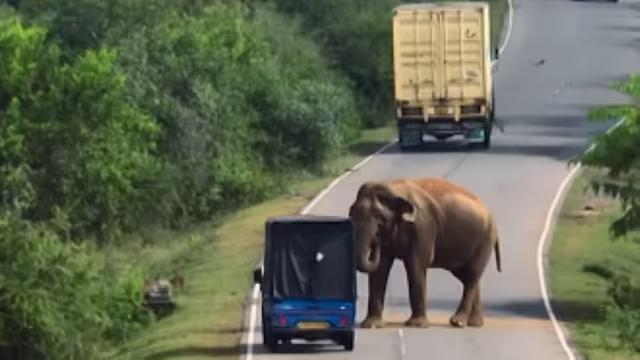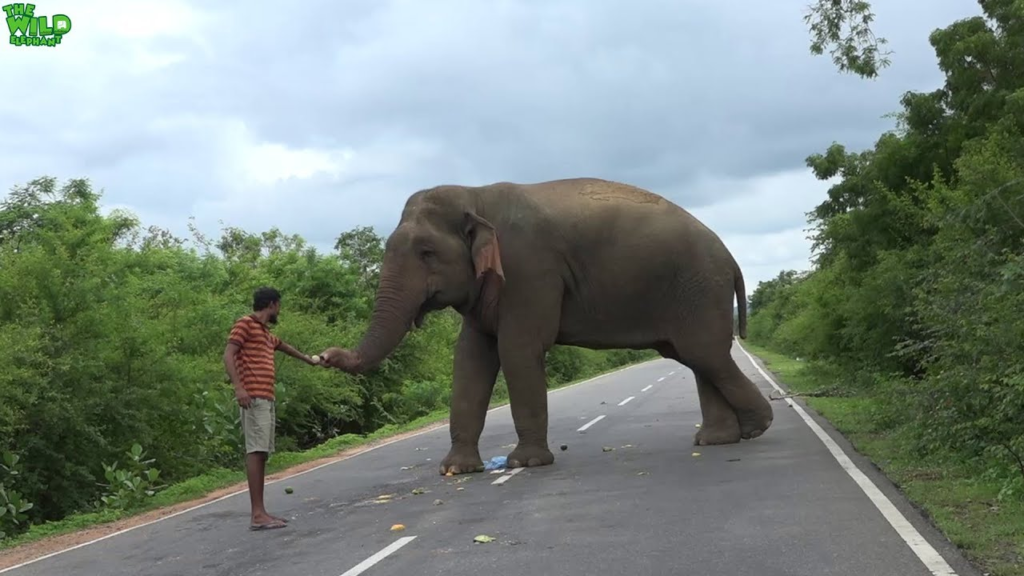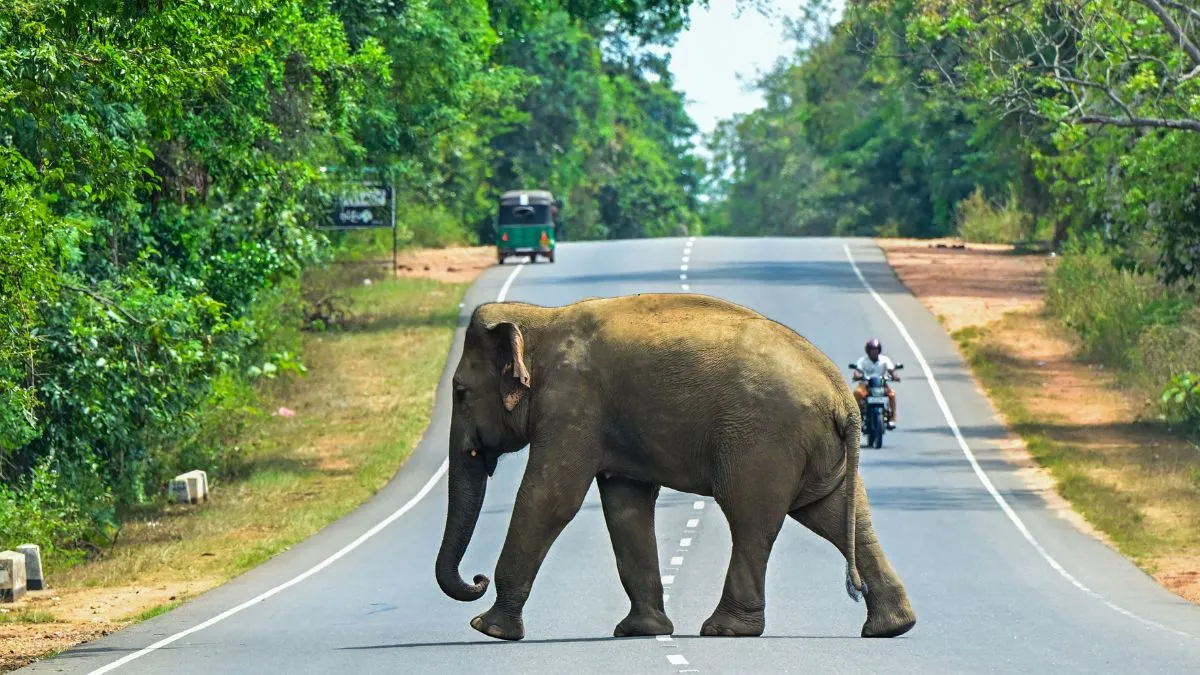In Sri Lanka’s vibrant landscape, wildlife often intersects with everyday life in the most fascinating ways. Along the Buttala-Kataragama road, an extraordinary story unfolds involving a wild elephant named Raja, who has captured the hearts of locals and tourists alike with his unique tax-collecting antics.
This majestic elephant has not only become an iconic figure on this stretch of road but also a testament to the harmonious coexistence between humans and wildlife in the island nation.
Raja Elephant Collecting Tax
Raja, a wild elephant believed to be over 40 years old, has earned the nickname “toll collector” for his endearing habit of stopping vehicles on the Buttala-Kataragama road and requesting food.
Locals, who fondly refer to him as “Raja” meaning “king,” have embraced this unconventional ritual, transforming what began as a casual food search into a beloved tradition.
Raja’s method is as patient as it is effective. Standing majestically by the roadside, he waits for vehicles to approach before gently extending his trunk toward the drivers.
Unlike a typical toll booth operator, Raja doesn’t demand coins or cash; he seeks fruits, especially bananas, which are readily offered by motorists who often come prepared for the encounter.
Read : Aphantasia: The Condition Where People Can’t Visualize Pink Elephant
This unique exchange has become so ingrained in the region’s culture that roadside stalls selling fruits have sprung up along the route, catering to drivers anticipating a meeting with Raja.
An elephant named Raja in Sri Lanka has become well-known for his unique behavior of stopping vehicles to collect a "toll" in the form of food before allowing them to pass. pic.twitter.com/ePYpzaNje0
— Mr Makiri ™ (@MrMakiri) December 7, 2024
Despite occasionally causing minor delays on the busy road that links Sri Lanka’s west and southeast coasts, Raja is treated with respect and admiration. His presence symbolizes the deep cultural reverence for elephants in Sri Lanka and reflects the community’s willingness to adapt to the natural behaviors of these gentle giants.
Social Media’s Celebration of Raja’s Antics
Raja’s charming behavior has not gone unnoticed in the digital age. Videos and stories of his tax-collecting escapades have gone viral on social media, sparking a mix of amusement and admiration from viewers around the world. Comments highlight a universal appreciation for Raja’s ingenuity and the peaceful coexistence between humans and wildlife in Sri Lanka.
One user remarked, “This is where and how I want my tax to be paid,” reflecting the lighthearted sentiment that Raja’s actions evoke. Another joked, “For people saying it’s dangerous, I mean, who’s gonna stop him? It’s called hustle!” These reactions showcase how Raja has become more than a local phenomenon; he is now a global ambassador for Sri Lanka’s wildlife and culture.

Critics who point out potential safety concerns are met with responses emphasizing Raja’s calm demeanor and the mutual understanding between him and the local community. Motorists recognize the importance of respecting his space and responding to his requests with kindness, fostering a unique bond that transcends traditional human-animal interactions.
Cultural Significance of Elephants in Sri Lanka
Raja’s story also resonates deeply with Sri Lanka’s cultural and religious heritage, where elephants hold a place of profound significance. In a nation where 70 percent of the population follows Buddhism, elephants are revered as sacred creatures.
The story of Buddha’s mother dreaming of a white elephant before his birth is a widely cherished narrative that underscores the spiritual connection between elephants and Buddhism.
Similarly, the Hindu community in Sri Lanka worships Lord Ganesha, the elephant-headed god of wisdom and prosperity, further cementing the animal’s symbolic importance in the country. This reverence for elephants extends beyond religious practices into everyday life, where they are celebrated as cultural icons and integral parts of Sri Lanka’s identity.

Raja’s presence on the Buttala-Kataragama road is a living representation of this cultural bond. His role as an unofficial toll collector not only delights travelers but also reminds them of the rich traditions and values that define Sri Lankan society.
Raja’s heartwarming tale is a testament to the enduring relationship between humans and wildlife in Sri Lanka. As he continues his tax-collecting duties along the Buttala-Kataragama road, he brings joy to locals and tourists while serving as a symbol of cultural heritage and environmental harmony.
In a world often fraught with conflict between development and conservation, Raja’s story offers a glimpse of how coexistence can thrive when rooted in mutual respect and understanding.
let’s enjoy few years on earth with peace and happiness….✍🏼🙏

